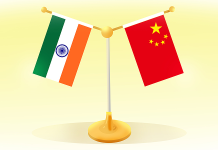
On April 8, 2025, the U.S. stock market woke up to a scene of cautious optimism, clawing its way back from a brutal crash the day before. Monday had been a rollercoaster—Wall Street’s major indexes plummeted, with the Dow Jones Industrial Average shedding nearly 4,000 points over two days, the S&P 500 diving into correction territory, and the Nasdaq flirting with a bear market. The trigger? President Donald Trump’s sweeping tariff announcements are rattling global trade nerves. But Tuesday brought a twist: stocks roared back, with the Dow gaining 1,300 points, the S&P 500 up 3.2%, and the Nasdaq soaring 3.6%. What sparked this rebound, and what does it mean for everyday investors? Let’s unpack it.
In This Article:
The Monday Meltdown
Picture Monday as a stormy sea. Trump’s tariff plan—34% on China, 20% on Europe, and exemptions for Canada and Mexico—hit like a thunderclap on April 2, sending markets into a tailspin. By Monday, April 7, the S&P 500 had crashed over 10% in two days, erasing $6 trillion in U.S. market value. Investors panicked, fearing a trade war that could choke growth and spike inflation. Tech giants like Nvidia and Apple, darlings of the AI boom, took a beating, dropping 5.7% and slipping further, respectively. Small-cap stocks crossed into bear territory, and even global markets—Japan’s Nikkei down 9%, China’s CSI300 off 4.5%—felt the tremors. It was chaos, pure and simple.
Tuesday’s Turnaround
Then came Tuesday, like a lifeboat in the storm. Markets flipped the script with a vengeance. The Dow’s 1,300-point leap was a cheer for bargain hunters who swooped in, snapping up stocks at discount prices. A whisper of hope helped too—a rumor that Trump might pause tariffs (except on China) for 90 days. Though the White House quickly denied it, the mere idea lit a spark. Tech stocks, beaten down the day before, led the charge—Nvidia bounced 3.8%, signaling resilience. Across the globe, Japan’s Nikkei rocketed 6%, and Europe’s indexes perked up. It wasn’t just blind luck; strong buying from institutional investors and a sense that the panic might’ve overshot reality fueled the rally.
Why the Bounce?
So, what turned the tide? First, fear gave way to opportunity. After Monday’s sell-off, stocks looked like steals—think of it as a clearance sale on Wall Street. Second, Trump’s tariff talk, while still firm, hinted at negotiation wiggle room, calming jittery traders. Third, the U.S. economy’s backbone—solid job numbers and corporate earnings—reminded folks it’s not all doom. Sure, tariffs could sting, but the market seemed to bet on adaptation over collapse. Globally, Asia’s rebound and Europe’s steadying hands showed the world wasn’t ready to fold. It’s like everyone took a deep breath and said, “Maybe it’s not the end.”
What’s Next for Investors?
This rebound isn’t a victory lap—it’s a breather. Tariffs are still coming, with more set to kick in soon unless Trump blinks. Inflation could creep up, and growth might slow if trade wars heat up. But Tuesday’s surge suggests resilience. For the average investor, it’s a reminder: don’t panic-sell. History shows markets often bounce back from sharp drops—like after the 2020 COVID crash, when the S&P 500 recovered in months. Diversify, hold steady, and maybe snag a deal if you’re brave. The Dow’s still up 23% for the year—proof this isn’t 1929.
The stock market’s rebound after Monday’s crash is a tale of grit and grit-your-teeth uncertainty. From a tariff-induced plunge to a hope-fueled rally, it’s a wild ride that’s far from over. For now, Wall Street’s dusting itself off, betting on America’s knack for bouncing back. Whether it’s a blip or a trend, one thing’s clear: in this game, nerves of steel—and a little faith—go a long way.
-By Manoj H



